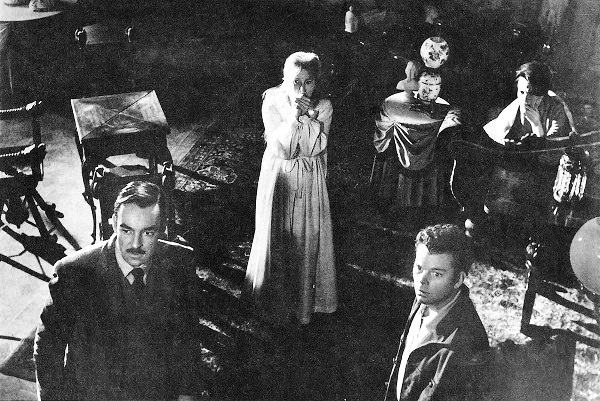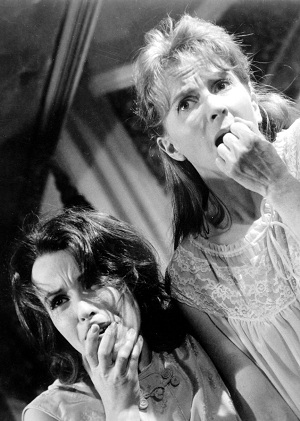
My tale starts with an invitation. A simple letter on the morning mat of an ordinary day. To sojourn in the notorious Hill House. A house born bad. I smirked and discarded the wretched thing there and then. But my old friend Dr Markway was dogged. “An experiment of tremendous important to science,” he persisted. “Vital to the disproval of parapsychological disturbances.”
I humoured him. “I’ll go. But do not expect results. Stuff and nonsense!”
A couple of days later and I ground my Plymouth Fury up the gravel drive. Hill House filled the windscreen, squatting vilely ahead. On entering I greeted Markway and the other lab-rats. I was shown to a grand room and I unpacked before we reconvened for dinner. Luke was brash and cynical, not unlike a gameshow host. Theodora was haughty and mocking in contrast to Eleanor whose demeanour was timid and mouselike. A more diverse group I could not have imagined. Markway knew what he was doing.
 Now I am required to still my own hand in order to drive the ink over the page. It vibrates from memory of a primal horror witnessed over those next few nights. The booming reverberations, the gnarled forms, the mutilatedscreams. Onslaughts on reason combined in a fetid rash of terror. I saw, or thought I saw, things that were not meant to be.
Now I am required to still my own hand in order to drive the ink over the page. It vibrates from memory of a primal horror witnessed over those next few nights. The booming reverberations, the gnarled forms, the mutilatedscreams. Onslaughts on reason combined in a fetid rash of terror. I saw, or thought I saw, things that were not meant to be.And the locus of these events was Eleanor herself. Harried and hunted by a beckoning entity. I collapsed to my knees, shrieking that I could take no more. Without shame I fled, screaming as a babe, to leave the others to what fate had deigned for them.
I heard no more til many years later I learned of a cinematographic reconstruction of the ‘events’. Summoning courage from an untapped seam within, I inserted the ‘DVD’ into my digital-video display construct. My part in proceedings had, perhaps understandably, been excised. And I am convinced some of the events have been reduced in tone and intensity. Nevertheless the film was subtle, refined and rollickingly exciting. The director has employed a devilishly inventive mise-en-scène to suggest much almost without showing anything. A host of perspective tricks and vertiginous moves accentuate the fear. What remains is one of the scariest psychological horror films available to man. See it, if you be brave, and make up your own mind! And please do not confuse with the bastard remake of latter years!
I must go now. The electricity has been switched back on.




